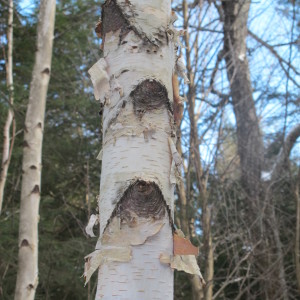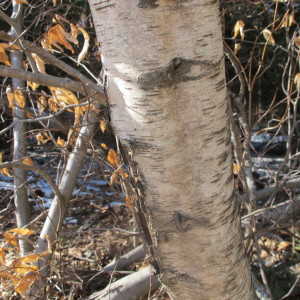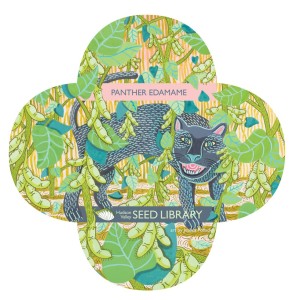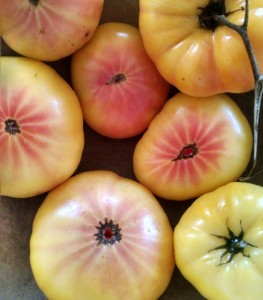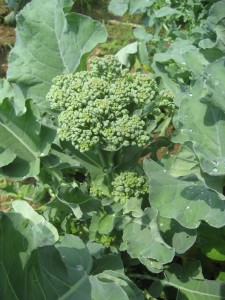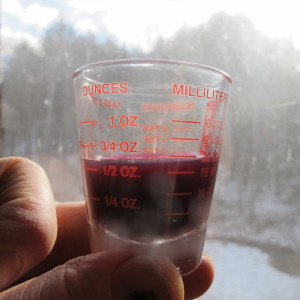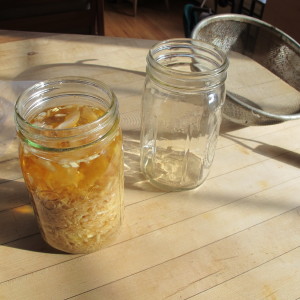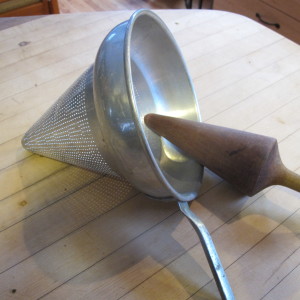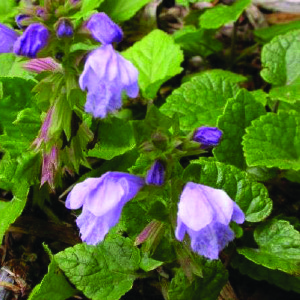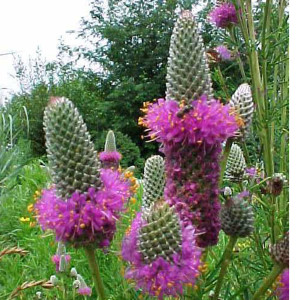Tree Identification
Winter is a slow time for me – there is no weeding or mowing or transplanting to do – so I have time to cross country ski or walk almost every day. I love observing the trees and native shrubs of the forest, and try to know the name of everything I see. Trees without leaves are a bit of a challenge to most of us, but by now I should know almost everything I see, either by tree shape, bark or buds. If you don’t know the woody plants you see in winter, now is a good time to learn them.
I own a number of books that are sold as tree identification books, though most of them try to cover every tree in North America, and can be difficult to use. Last year I got one I really like and sometimes put it in my pack, just in case I see something out of the ordinary. It’s called Forest Trees of Vermont by Trevor Evans. It has detailed information about 82 trees native to Vermont or that have been introduced and are common in the state. Each species has 3 to 6 photos of the leaves, bark, buds, flowers, nuts and sometimes the entire tree, along with descriptions of important characteristics.
There are six species poplars, for example, that grow in Vermont (and presumably throughout New England), but only 4 are native. I know just 2 of the native poplars, the big-toothed poplar (Populus grandidentata) and the quaking aspen (P. tremuloides), and one non-native species, the Lombady poplar (P. nigra) So much for knowing all the trees of the forest. For each genus (a scientific grouping a closely-related plants), there is a chart that summarizes the differences and similarities of each species for their bark, leaves and buds (which are key for winter identification).
An interesting distinction for poplars is the difference in taste of the bark. I’d never read any reference to taste before as a distinguishing characteristic. Quaking aspen has ”very bitter” tasting bark, according to the book, while bigtooth aspen does not. That’s a very useful and easy distinction – from a tree farmer who clearly know his trees. Taste is not a distinguishing characteristic for most groups and is not mentioned, but the odor of twigs is used for cherries and plums. Again, very useful.
The book also has 2 dichotomous keys: one for summer identification, one for winter. In high school biology class I learned to use keys, and find them useful. A key has pairs of observable characteristics. So, for example, a useful distinction is whether a tree has needle-like leaves, or broad leaves. In the first group, all but the tamarack are evergreen. By dividing all trees into 2 those categories, the pool of trees is considerably reduced. In the first group you have pines, cedars, spruce, firs, hemlock and tamarack. Then a second pair of characteristics is used to divide each group into a smaller group, and so on until you find your tree.
Even though, as a well known geezer, I do not have a cell phone, I recognize the utility of including QR codes in the book. For you other geezers and geezerettes, a QR code is a little square with dots that you show your cell phone and, though the wonder of the internet, connects you to a database. In this case there are one or two codes per tree: one taking you to the U.S Department of Agriculture’s NRCS site, another to the Forestry Service site. There is a huge amount of information available there.
Long ago I learned another good distinction: whether leaves and twigs sit opposite each other, or staggered on a branch. There is a mnemonic to help with this: MADCap Horse. That stands for Maple, Ash, Dogwood, members of the group Caprifoliaceae (a group including honeysuckles, viburnums, elderberries and some other shrubs) and horse chestnut – those all have opposite branching. Eeverything else has alternate branching (with minor exceptions, of course).
I should note that the opposite branching distinction is not infallible. For example, a mature sugar maple has many twigs that do not appear to be opposite another. That is because one has fallen off. Look to the top of the tree, where younger twigs are present and you will see opposite pairing.
In winter bark is useful to me for identifying trees. Everyone can probably identify a birch by its whitish bark. But is it a white or paper birch (Betula papyrifera) or a gray birch (B. populifolia)? According to the charts in Forest Trees of Vermont, both have chalky or grayish white bark but gray birch’s bark is “dirty looking”. And paper birch bark separates into “thin horizontal papery layers”, while the gray birch’s bark does not. That should do it. Yellow birch also has papery layers, but the bark is “silvery gray or light yellow”. The book also notes that yellow birch gives off a “wintergreen odor when young branches are scraped”.
Although this book was aimed at Vermont readers, I think it would be useful anywhere in New England. So go for a walk with it or the tree book of your choice, and see what you can identify.
Henry is the author or 4 gardening books. His website is www.Gardening-Guy.com. He lives in Cornish Flat, NH.
Hudson Valley Seed Library
It’s that time of year again. Time to buy seeds, either at your local feed-and grain store, the local garden center, or from a catalog. I like to buy locally, but catalogs do present a wider variety than most stores can offer. Recently I called Ken Greene, founder of the Hudson Valley Seed Library in Eastern New York State, to have a chat about seeds.
The Hudson Valley Seed Library (www.seedlibrary.org) is a bit different than most seed companies. It was started in 2004 by Ken Greene to make locally grown seeds available to gardeners in his region, and to keep old local varieties from disappearing. He wanted to develop strains that are particularly good in the northeast, and to teach gardeners how to save seeds themselves.
Ken was afraid that the big companies would take over the seed market with genetically modified seeds (GMO’s), though that fear seems not to have materialized. Most seed companies refuse to sell GMO’s, though many farmers use them to grow grains and cotton.
Ken is a self-taught gardener. His education is in special education, but when he was working part-time in a library he offered patrons some seeds that he had grown. Take some seeds, he told them, grow them out and then bring some back for next year. He taught the patrons how to save seeds properly. It was sort of a slow-moving seed swap and no money changed hands. It was a big success, so in 2008 Ken quit his day job and started his seed company. He kept the same name he had used when he started, Hudson Valley Seed Library.
Most large seed companies contract with farmers to produce the seeds they sell in colorful little paper packages. Although a hundred years ago New England boasted many seed companies that produced seeds for local use, now there are just a handful of companies based here. Our summers are short, and often high in humidity which can encourage fungal diseases, so even local companies generally develop and test their varieties here in New England, but then send seeds to growers elsewhere for mass production. Idaho, New Mexico and other hot, dry areas are prime seed-growing areas. Hudson Valley grows its seed in New York and New England, much of it on Ken’s farm in Accord, NY.
Hudson Valley only sells open pollinated varieties, those that will breed true, year after year. You can save seeds from these. I save seeds from my favorite heirloom tomatoes every year, as they are open pollinated. Each tomato has both male and female parts, and they can be wind or insect pollinated. Heirloom just means that they are varieties that have been around for a long time – generally 50 years or more.
Some heirloom vegetables are open pollinated, but are susceptible to inadvertent crosses by insect or wind pollination. Cucumbers, squash and pumpkins are easily cross pollinated, resulting in those weird monsters that sometimes show up in your compost pile. If you want to save seed from the vine crops, you (and your neighbors) need to separate varieties by a quarter of a mile or more, or protect the blossoms from insects and hand pollinate blossoms yourself. Hudson Valley has a membership program that offers education to its members about seed saving, and opportunities to test new lines of seed.
I asked Ken about some of his favorite open pollinated varieties. He suggested that I try his New York Early Onion. He said most gardeners don’t bother starting onions from seed, but that this one is a great onion that keeps well and is worth the time and effort. You should start these indoors in flats anytime from mid-February to late March – and I will.
A great container tomato, Ken said, is Summer Sunrise. It’s a small plant but produces full-sized salad tomatoes on sturdy stems, and has great heirloom flavor. He also likes growing ground cherries, a relative of tomatoes that taste like ”pineapple, citrus and tomato”. They are not ripe until they fall off, so you harvest them by picking them up off the ground. Each comes wrapped in a husk – to keep the fruit clean! I’ve grown them, but not recently, and might try some again.
One of my favorites from Hudson Valley is Piracicaba, a broccoli relative that only produces what, in a standard broccoli, we would call side-shoots. No big head. But Piracicaba is very productive and very tasty. It continues to produce long into the fall, too.
I will also try Hank’s Xtra Special Baking Beans. I’ve always found that dry beans are a lot of work to clean and get ready to use, but Ken gave me his method, which I like: let bean pods dry in the field, then pull them. Hang the plants in a hoop house or barn until the pods are brittle. Then beat the plants against the inside of a clean 30-gallon trash can to knock the beans loose, avoiding the task of shelling. To get rid of the extraneous material, set up a box fan so that it can be blown away as you empty the trash can into a bucket. Slick!
There is nothing wrong with buying hybrids or modern varieties, though I do find many of the old open-pollinated heirlooms offer wonderful flavors I could never find in the grocery store. So I grow both, and maybe you should, too.
Henry has been a UNH Master Gardener since 1998 and is the author of 4 gardening books. His website is www.Gardening-Guy.com.
The One-Day Cold
I don’t often catch colds. Part of that may be that I eat well, and get plenty of sleep and exercise daily. Or maybe it is just that I don’t have school-age kids and work out of my house, so I don’t come in contact with all the germs that are floating about. But over the holidays I went to parties, saw the grandkids, shopped and had plenty of chances to catch a cold. And I did catch one.
One morning shortly after the holidays I woke up with a sniffle, a scratchy throat, and a general feeling of malaise. So I got out the big guns: Fire Cider and elderberry elixir. I took about half an ounce of each of these herbal cures after breakfast, again at mid-morning, and then after lunch. As if by miracle, my symptoms started to go away. I continued the cure, and by bedtime I felt fine. Coincidence? Perhaps.
Several years ago I learned how to make Fire Cider from Vermont herbalist Rosemary Gladstar. She explained that the ingredients in this potion stimulate the immune system and help the body heal itself. That makes sense to me as the recipe (see below) contains garlic, horseradish and hot pepper – and more! Any one of these is likely to make my body wake up and pay attention!
Here’s the basic recipe as given by Rosemary Gladstar: In a glass jar combine the following ingredients:
- 1/2 cup grated horseradish
- 1/8 cup minced garlic
- ½ cup finely chopped onion
- ½ cup grated fresh ginger
- ½ to 1 teaspoon powdered cayenne (or other hot pepper)
- About a quart of organic vinegar, preferably locally made and containing the web of live bacteria that constitute the “mother” of the vinegar.
- ½ cup honey (or to taste), heated till well liquid.
All ingredients are best if fresh, local and organic; I grew most of mine. Let this steep, preferably for 3 to 4 weeks, then pour through a sieve and it is ready to use. You can use it sooner than 3 weeks, of course. Seal with a plastic lid, or put a plastic bag over the jar and seal with a canning lid. The fumes are strong enough to eat through a normal canning lid over time. Keep cool or in the fridge.
For Christmas my sister-in-law, Lisa Goodale Brinton, gave me some Fire Cider she had made which was an enhanced version of the one I learned from Rosemary Gladstar. She made it by the gallon, adding rosehips, sun-dried shiitake mushrooms, rosehips, orange and lemon juice and zest, fresh thyme and rosemary and fresh turmeric root that she had fermented using kambucha. It tasted very good, and was the potion I used to help kick my cold.
After I made my Fire Cider I added some fresh rosemary and lemon juice: a sprig of the rosemary and the juice of a lemon. I added it after I first tasted it, and it only improved the flavor. I read that one can add powdered turmeric instead of macerated fresh fermented turmeric, so I added a teaspoon of dry turmeric powder. Spices don’t last forever, so it is always good to buy fresh spices regularly. My turmeric was several years old, so I got some fresher stuff to use.
While reading to see if anyone could explain why Fire Cider might help kick a cold I came across some amazing news: a corporation called Shire City Herbals has trademarked the term Fire Cider and has filed lawsuits to prevent others from using the term. Yikes, I could be in trouble now! But apparently lots of protest has been made; see www.freefirecider.com for more information. Rosemary has been sharing her recipe since the 1970’s and the recipe was included in her wonderful book,Rosemary Gladstar’s Herbal Recipes for Vibrant Health – which came out before Shire City Herbals even started their business.
I also recently made some elderberry elixir. I went to my freezer and got some of my frozen berries. In a saucepan I heated 6 cups of elderberries, 2 cups of water, a quarter cup of honey, a couple of tablespoons of lemon juice and half a teaspoon of cinnamon. I brought it to a boil and simmered it until the berries were mushy.
I used a jelly cone to separate the elderberry pulp and the juices. This is an aluminum cone with lots of small holes. It comes with a pointed wooden masher that I use to crush the berries and extract the juice. The 6 cups of berries produced a little less than a quart of the elixir. I will keep it in the fridge as otherwise if would ferment and spoil.
I can’t promise you that Fire Cider or my elderberry elixir will prevent or cure the common cold. But at worst, they are great placebos: tasty and full of zing.
Henry can be reached at P.O. Box 364, Cornish Flat, NH 03746 or by e-mail athenry.homeyer@comcast.net.
Plans for the New Year
I wonder why it is that so many of us make resolutions at this time of year: lose weight, keep a clean desk, be nicer to people working for political candidates that call us during dinner time … and so on. As a gardener, I don’t tend to think so much about resolutions, but more about what I hope to do in my gardens, come spring. What plants shall I try? What new gardens might I develop?
I recently got a catalog from a wholesale plant nursery, Van Berkum’s of Deerfield, NH, and spent an evening drooling over their catalog and thinking about all the plants I wanted. I made three kinds of notations: a star for everything I simply must have, a check for everything I’d like to have, and a dot for everything that sounds interesting. Needless to say, there were way too many marks to buy them all – I just don’t have room. Here are some of the starred plants.
Meehan’s Mint (Meehania cordata). I’ve never seen this, so I’m intrigued. It is for shade or part shade, likes moist soil, and spreads slowly by stolons (roots). It has showy lavender-blue flowers in May-June, and is a native wildflower that comes originally from Appalachia. I know where to plant this: under some old apple trees where my primroses bloom in pinks, whites and magenta. The foliage is just a couple of inches tall, and the blossoms stand 3 to 4 inches above it.
Purple Prairie Clover (Dalea purpurea). Browsing the on-line photos that are not included in Van Berkum’s printed catalog, the photo caught my eye. Nothing like the clovers I know, it stands 24 to 30 inches tall, and has showy cylindrical cones covered with tiny magenta flowers. The blossoms remind me of teasel flowers in that only part of the cone is blooming at any given time. Native to Missouri, it is hardy to Zone 3 (minus 30 degrees) and needs full sun.
White Cloud Calamint (Calamintha nepeta). I’ve seen this and even planted it for one of my gardening clients. I love it, and although it is listed as a Zone 5 plant, the one I planted wintered over last year, even with a cold winter. It forms a globe-shaped plant loaded with tiny white flowers, reminiscent of baby’s breath. I need one (or more)! Full sun, it tolerates dry soil.
‘Miss Manners’ Obedient Plant (Physostegia virginiana). I love obedient plant, but it is not obedient at all. It’s a thug! Tall, with wonderful pink flowers, it is great in a vase. But my goodness, getting it out of my garden was a struggle. But I miss it, and am tempted by this plant which is, allegedly, “not invasive”. Only 18 to 24 inches tall, it has white flowers and loves moist soil, and I have plenty of that. I’ll keep a sharp on it, and it if takes off, yank it!
Geum rivale ‘Flames of Passion’. This is a small perennial that does best in part shade and takes drought. I want it, largely, because it was introduced by one of my gardenheroes, Piet Oudolf. One winter when I was passing though Holland I visited him at his home in the countryside; I loved the fact that he had commissioned someone to carve life-size stone sheep and had them “grazing” around his property.
Piet Oudolf is a garden designer extraordinaire; among his projects is the High Line, a garden a mile and a half long built on an abandoned elevated railway line in New York. I plan to go there this year on my 70th birthday, April 23. Let me know if you want to join me for a garden walk there. It would be great fun to walk it with interested gardening friends – new or old.
Feather Reed Grass, ‘Karl Foerster’. I’ve got to try this tall grass, having heard it lauded by gardening great Bill Noble when I interviewed him recently. It’s his favorite plant. It grows 36 to 60 inches tall in a big clump, and is lovely from early in the season till late. Full sun.
I love delphiniums, but hate staking them up. There is a new group of them, the New Millennium Hybrids, that “shouldn’t need staking” if planted in full sun. I’ll give one or two a try, and see how they do.
Lastly, I absolutely must get an Itoh peony. This is a cross between a tree peony and an herbaceous peony, and at maturity can produce up to 50 blossoms over the course of a month. Expensive, but I’ve decided it‘s worth it. They come in a variety of colors, and I will buy mine when in bloom, so I will know exactly what I’m getting. I just need to figure out where to plant it. But, hey! I’ve got all winter to do that.
So make your gardening resolutions, or create a wish list for what you hope to plant. You can see photos of the flowers I mention on line at www.vanberkumnursery.com. They are strictly wholesale, but their website has a list of retailers that carry their plants.
Henry Homeyer can be reached at PO Box 364, Cornish Flat, NH 03746 or by e-mail at henry.homeyer@comcast.net.



